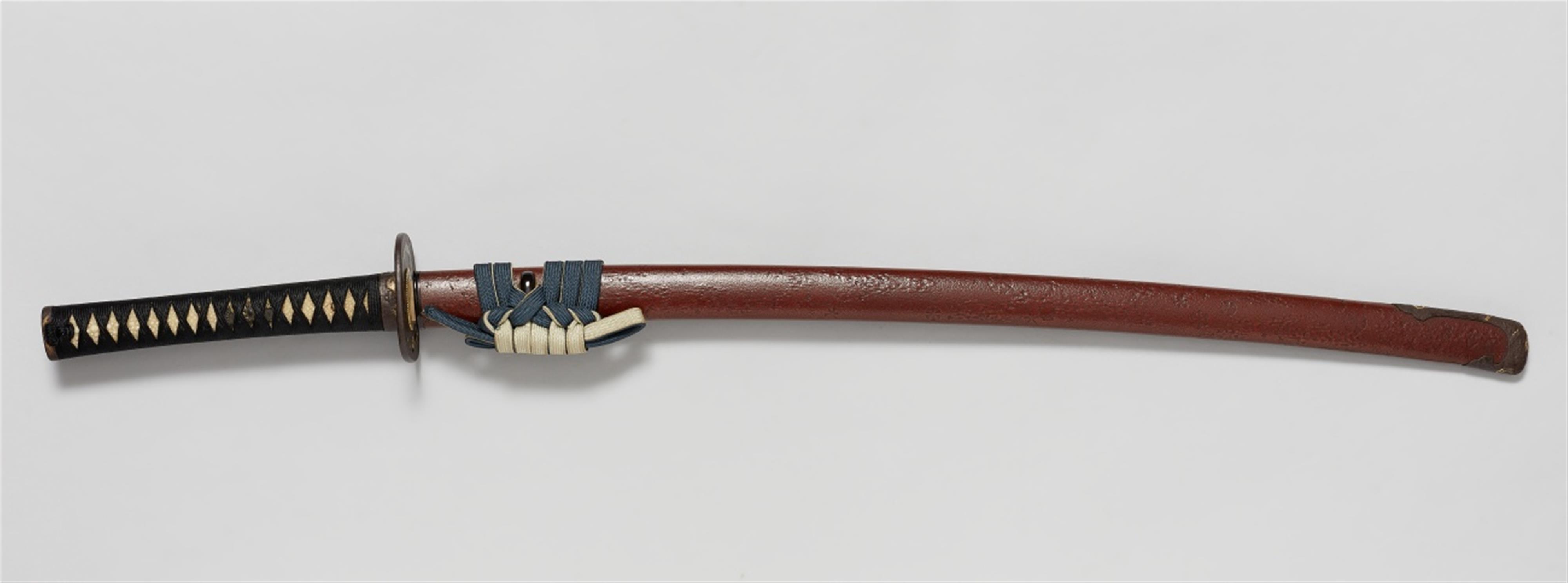Katana. Late Edo period
Blade length: 69.4 cm, shinogi-zukuri, ko-itame hada, gunome midare hamon in nioideki and choji midare mixed with ashi, midari-style ko-kissaki with boshi. Good state of polish. Nakago: ubu in ha agari kurijiri with kesho yasurime, signed: Tairyûsai Munehiro (Sôkan) zô no and dated February 1863.
Koshirae: iron tsuba with moon, snow and flowers in kin-zôgan, the same pattern in lacquer on the saya. Gilt shakudô menuki in the shape of three Fujiwara mon with wisteria (fujimon sansô), fuchi-kashira signed: Jakushi and decorated with a windswept landscape.
Tokubetsu Hozon certificate of the NBTHK (sword), dated Heisei 30 (2018)
Tokubetsu Hozon certificate of the NBTHK (koshirae), dated Heisei 30 (2018)
Tairyusai Munehiro, also known as Sôkan, was Koyama Munetsugu's best student and is known to be among the best smiths of the Shinshinto era. His works are predominantly exectuted in the Bizen-tradition, with magnificent quenching lines of ko-gunome chôji with a very tight grain.
Tairyusai Munehiro was born in Shirakawa, Mutsu province (nowadays Fukushima) approximatively 1820, His first known works are dated around 1847. It was only in the 1950's, after he had moved to Edo (nowadays Tokyo) that started to study under the famous Koyama Munetsugu. In 1854 he officially took the artist name (go) of 'Tairyusai'. His blades are ranked as Jô-Saku and known for their sharpness. Many of his works have a Tameshimei (cutting tests) on the Nakago. He died in 1883.






